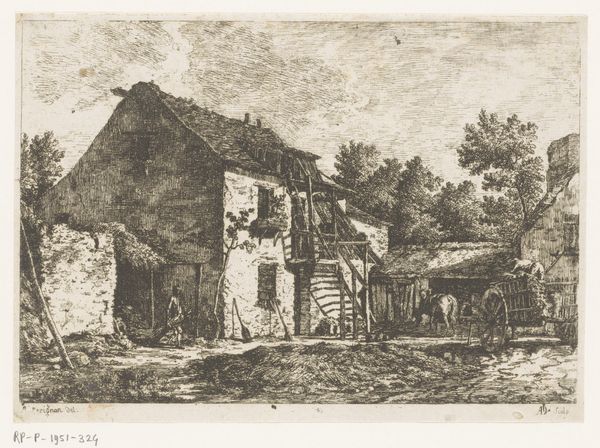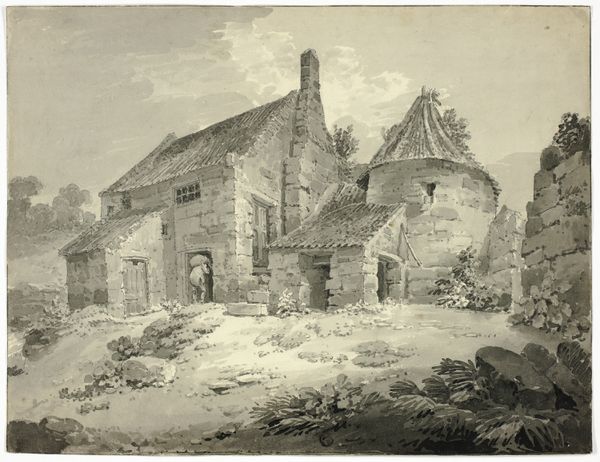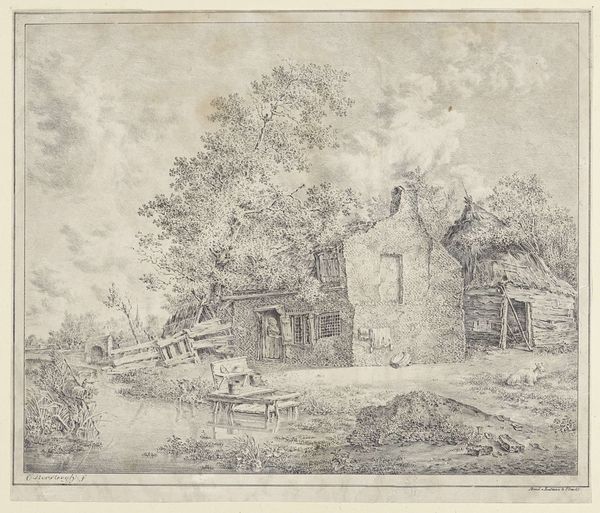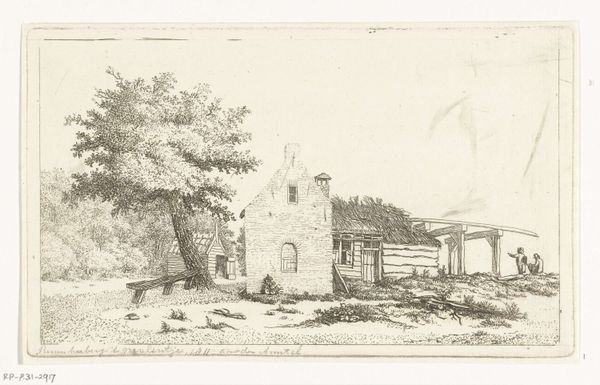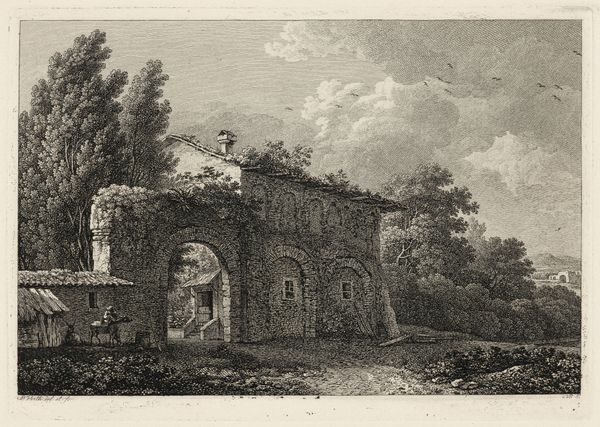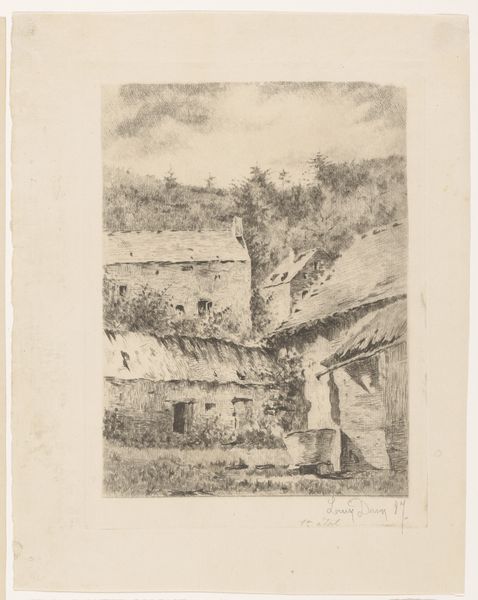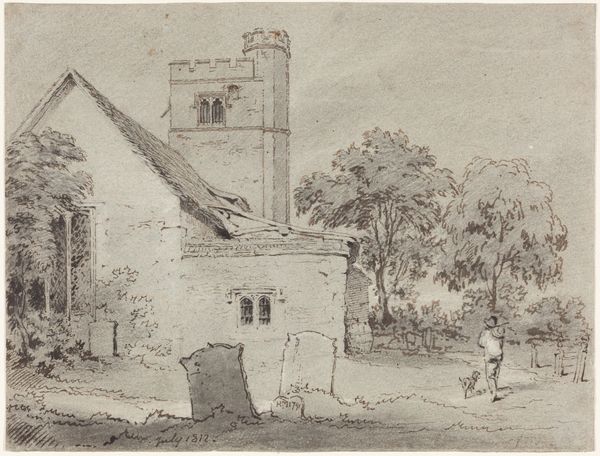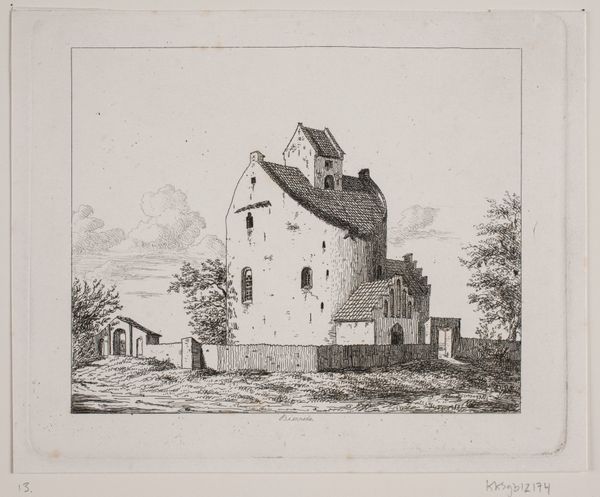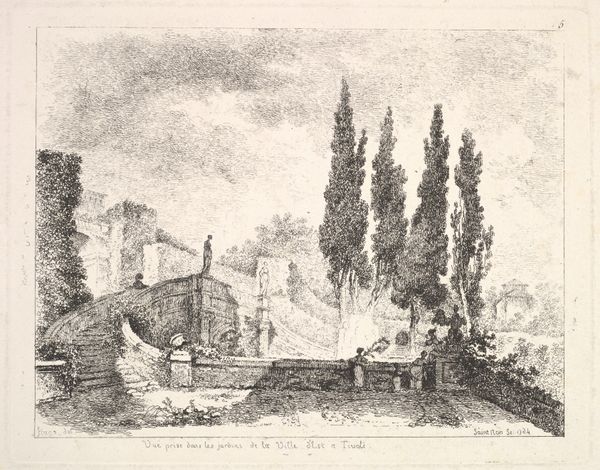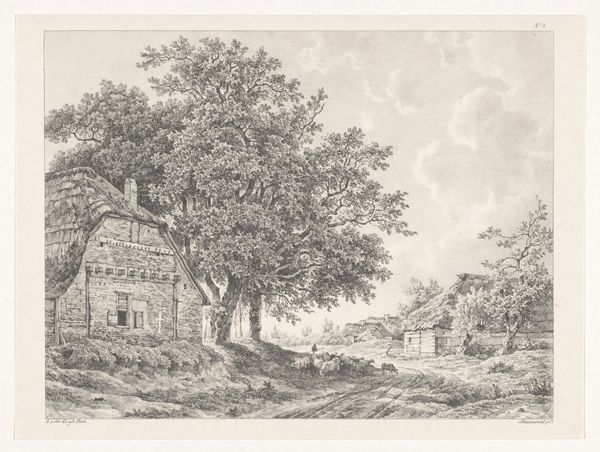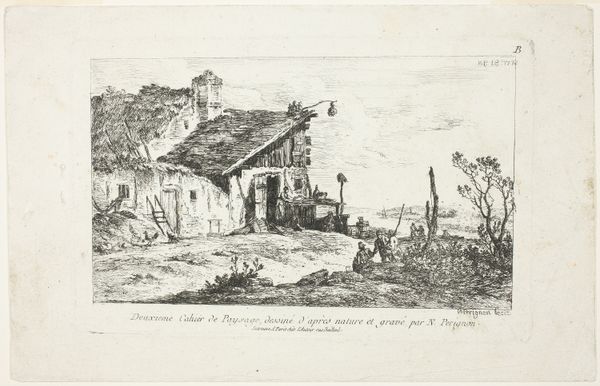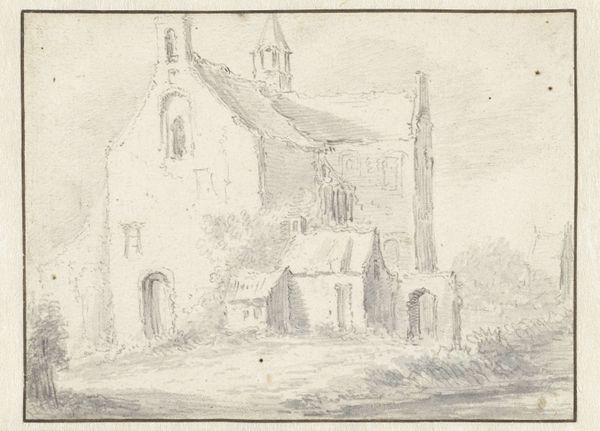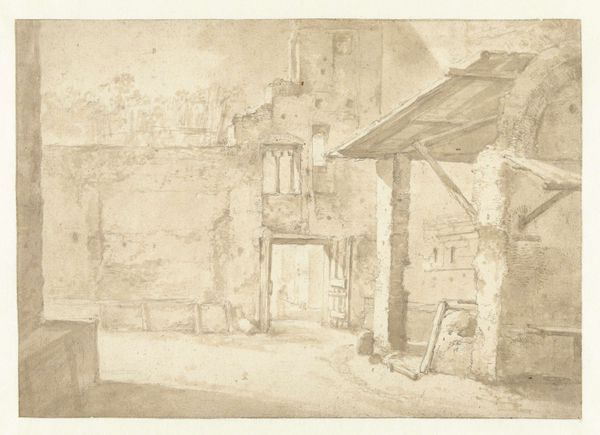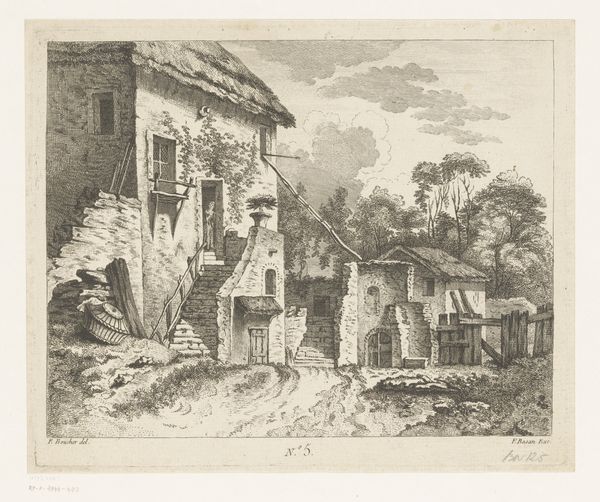
drawing, pencil, graphite, architecture
#
drawing
#
pencil sketch
#
landscape
#
etching
#
romanesque
#
pencil
#
graphite
#
architecture
#
realism
Dimensions: height 334 mm, width 437 mm
Copyright: Rijks Museum: Open Domain
Curator: Here we have Albertus Brondgeest's pencil and graphite drawing, "The Church Ruin in Bergen," created in 1819, part of the Rijksmuseum collection. Editor: My immediate reaction is a sense of melancholy, almost like staring into a fading memory. The textures—the crumbling stone—really invite a contemplative mood. Curator: Indeed. Brondgeest meticulously renders the ruined architecture. Note the lines, the carefully constructed gradations of shade. He captures a poignant study of decay using realism in the Romanesque style. Editor: There's something beautiful in how it’s decaying. And how Brondgeest immortalizes it through his art, turning something broken into a lasting work of beauty. It almost reminds me of Piranesi's etchings of Roman ruins, but with a much softer touch. Curator: The composition, of course, is key. The skeletal structure of the church dominates the foreground, but it's balanced by the subtle interplay of light and shadow, guiding the eye. A testament to the Romantic movement, certainly. The pencil medium also adds an element of precision. Editor: You're right. It's fascinating how such precise rendering can evoke so much feeling. You get this strange sense of timelessness with this technique. It reminds us how nothing stays forever, but through art, some essence persists. Curator: I concur. Brondgeest masterfully orchestrates visual elements of light and shadow in the pencil lines in order to speak to broader philosophical themes: impermanence, memory, the passage of time. The decay transforms into a new, aesthetic, and lasting presence. Editor: Makes you think, doesn't it? How much history has been imprinted on those stones, on those ruins, now brought back to life through Brondgeest's eyes and hands. This makes me contemplate our impact on spaces as much as spaces influence us. Curator: It is a work to contemplate, the visual weight from our own historicity imposed, too, through our reading. A true aesthetic treasure of realism and sentiment, rendered faithfully, precisely, with skill. Editor: Precisely. I came looking at what’s left behind, and I came away thinking about what we leave behind.
Comments
No comments
Be the first to comment and join the conversation on the ultimate creative platform.
